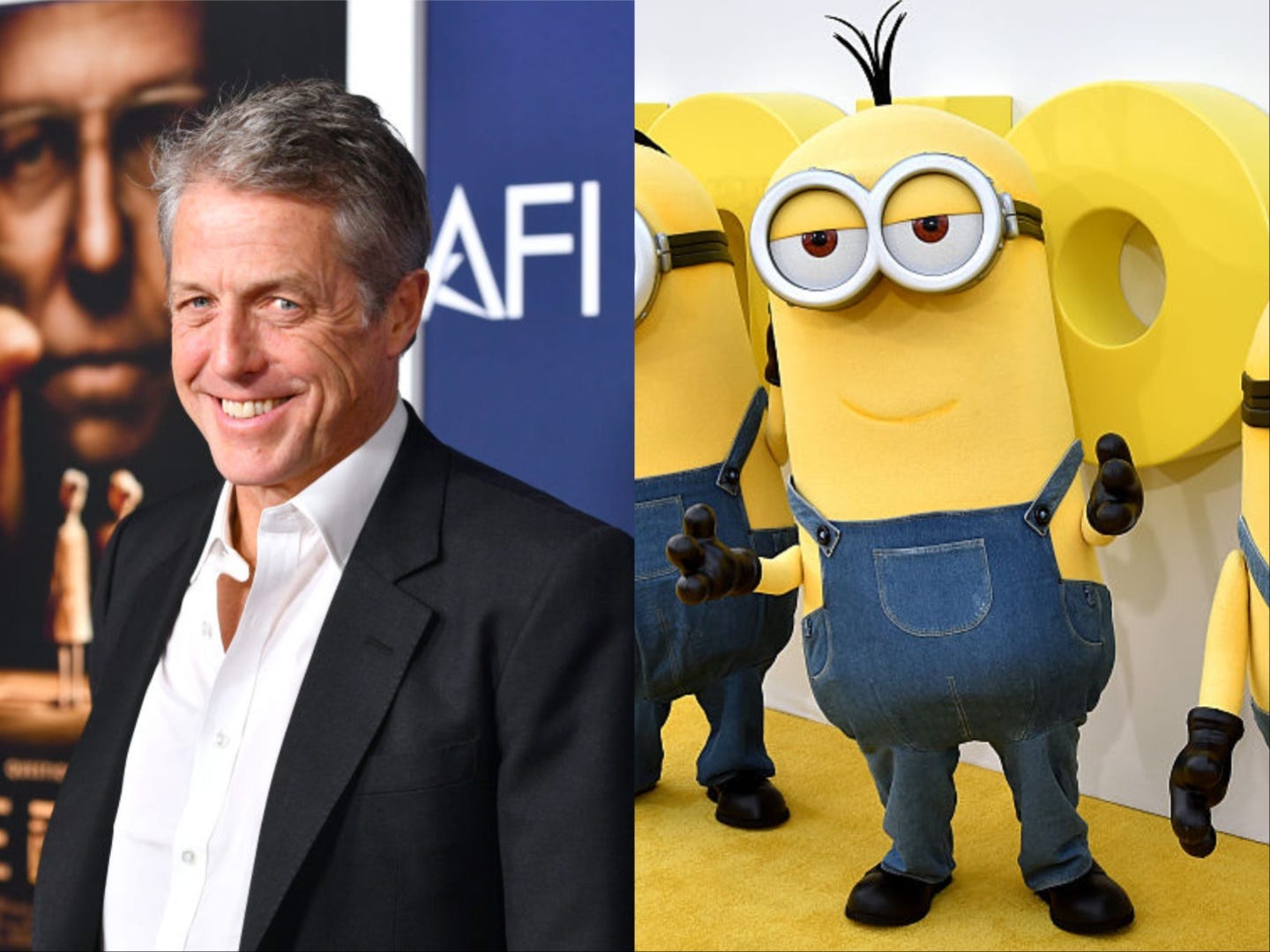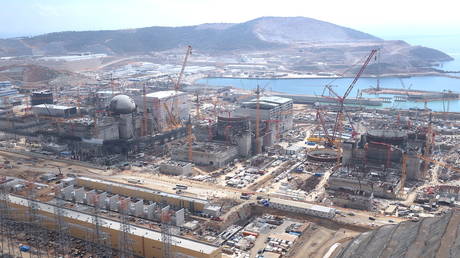If despair is the most unforgivable sin, then hope is surely the most abused virtue. That observation feels particularly apposite as we enter the Cop season, that time of United Nations megaconferences at the end of every year, when national leaders feel obliged to convince us the future will be better, despite growing evidence to the contrary.
Climate instability and nature extinction are making the Earth an uglier, riskier and more uncertain place, desiccating water supplies, driving up the price of food, displacing humans and non-humans, battering cities and ecosystems with ever fiercer storms, floods, heatwaves, droughts and forest fires. Still worse could be in store as we approach or pass a series of dangerous tipping points for Amazon rainforest dieback, ocean circulation breakdown, ice-cap collapse and other unimaginably horrible, but ever more possible, catastrophes.
Yet, apparently we must still have hope. It is mandatory. Change is impossible, we are told, without positive thinking and a belief in a better future. That is the message of just about every politician and business leader I have interviewed in close to two decades on the environment beat.
And we will hear it again, at the UN biodiversity Cop16 in Cali, Colombia, which kicked off this week, then at the climate Cop29 in Baku, Azerbaijan, in a few weeks’ time. If past international confabs are any guide, there is little prospect of concrete action in the here and now, but there will be ever-more ambitious plans for the distant future: roadmaps, commitments, targets, reasons to hope. And, of course, we will hear it most loudly in the US presidential election, which is always about which candidate is most faithful to the American dream of endless expansion.
But what if it is hope that is the problem? What if hope is the antidepressant that has been keeping us all comfortably numb when we have every right to be sad, worried, stirred to action or just plain angry?
These are not questions most of us want to ask. Me included, though most people who read environmental coverage assume the opposite because the trends we report on are relentlessly grim. Some of my Guardian colleagues joke that my job is to make everyone feel miserable.

Who wants to do that? But I often do wake up filled with dread. And while exhortations to lift my spirits or look at things in a more positive light are no doubt well-intended, it does make me bristle a little. Isn’t it healthy to be concerned, as long as it is not debilitating? Isn’t it part of a process towards seeking change?
New research reveals that people who are experiencing climate-related distress are more likely to engage in collective action. History, by contrast, shows that manufactured optimism can lead to complacency and the shirking of responsibilities.
In the 1990s, hope – coupled with doubt – was the fossil fuel industry’s antidote to the precautionary principle, the sensible idea that some problems had such dire implications that humanity should err on the side of caution even if the science was not completely settled. When George Bush was president, he was initially so concerned by the impact of fossil fuels on the climate that he looked into regulating the oil industry. But he backed away from this on the grounds that future generations would probably develop new technologies to solve the problem. Call that dumb, call that wishful thinking, or call that hope, the result was the same: no action.
That once again looks to be the temptation of Britain’s Labour government in promising £22bn for carbon capture and storage projects. This technology is supposed to catch greenhouse gas emissions before they can enter the atmosphere. But it is incredibly expensive, has never worked at the necessary scale and, until now, has largely been a ruse for the petroleum industry to continue pumping.
There are more constructive, less manipulative types of hope, of course. Hope based on common sense and solid science, hope based on actions taken today rather than promised in the distant future. Hope based on keeping our home planet habitable rather than colonising Mars or waiting for rewards in the afterlife. This is hope that generates change. Some of the most effective climate action advocates, such as Christiana Figueres and Katharine Hayhoe, are impressively effective advocates of such positive thinking.
And, yes, there are good news stories, even on the environment beat: the extraordinary expansion of renewable energy has exceeded even the most optimistic forecasts (though a huge share of the extra supply has been taken up by the extra demand of artificial intelligence, cryptocurrencies and social media); carbon emissions might actually fall this year (though analysts have been saying that for years and if and when it does happen, the reductions will certainly be too shallow to prevent global heating from passing 1.5C, probably 2C and entirely possibly 3C or 4C); and the human population may peak mid-century (which would give other species more breathing space as long as they are not already extinct by then).
At the Guardian, we try to present solutions as well as problems. But there needs to be a balance that reflects reality. After the recent New York Climate Week, the journalist Amy Westervelt wrote of the zombie-like repetition of “We have to stay positive!”, “Tell the positive stories!” and “Give people hope!”, even as the reality of the moment was the devastation of Hurricane Helene, deadly landslides in Nepal, the sentencing of a UK climate activist to two years in prison and news that fossil fuel companies are expanding production. As she put it: “Don’t get me wrong, there are good news stories and I know how important it is to share and savour them, but the focus on positivity to the exclusion of anything else felt completely surreal and, if I’m being honest, a little scary.”
Hope is at best a motivating belief, a tool, a commodity. It should never be rammed down other people’s throats, especially those who are suffering the consequences of the wish fulfilment of wealthier, faraway consumers.
In the Amazon rainforest right now, the political mood music and government policies are much better under President Lula than they were under President Bolsonaro, yet the situation on the ground is becoming worse. Ever longer dry seasons have left some of the world’s biggest rivers at horrendously low levels and there have been more fires this year than at any time in two decades.
It is sadly not enough for this government to be better than the last. It needs help from the rest of the world. That is clear from the big trends: South America is becoming hotter, drier and more flammable. Fires are turning forests into carbon emitters rather than carbon sinks. Up to half of the Amazon could hit a tipping point by 2050 as a result of water stress, land clearance and climate disruption.
Forest dwellers are having to cope with a daily reality that increasingly resembles an apocalypse. Promises of help are predicated on even more business as usual. Not surprisingly, many feel they are victims of a confidence trick.
Ailton Krenak, a Brazilian Indigenous intellectual, said original peoples had learned to be distrustful of hopes based on economic development. “When I denounce this kind of end of the world, I’m not renouncing hope. But I also don’t want to promote a ‘placebo hope’, one where you pat someone on the shoulder and say everything will be fine. It won’t be fine. We’re going to get worse for a while. But after that, we can improve, as long as we learn to renounce,” he observed in a recent interview with Mongabay.
This suspicion has deep roots – and not just in Brazil. Hope was weaponised by Christian missionaries, promising a better afterlife. Then by colonisers, offering access to a supposedly superior civilisation. Then by the capitalist market, with a lure of wealth and creature comforts in exchange for land and nature.
The promise of a better tomorrow is seductive to cultures that put a greater emphasis on contentment today. The anthropologist Ana Maria Machado told me: “The Yanomami people, who inhabit Brazil’s biggest Indigenous territory, have no word for hope, nor anything like it … They live very much in the present and their focus is on relationships now rather than in the future.” She said the views of the future outlined by the Yanomami’s best-known shaman, Davi Kopenawa, portended an end of the world. He has described the climate crisis as the “revenge of nature”. Yet this has not stopped him from being one of Brazil’s strongest advocates for global action on protecting nature and reducing emissions.









